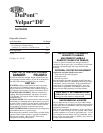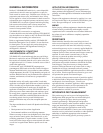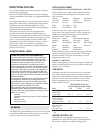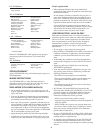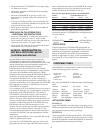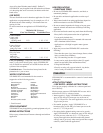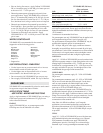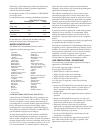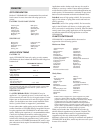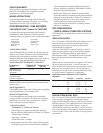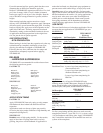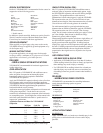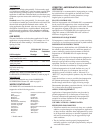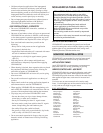
GENERAL INFORMATION
DuPont™ VELPAR® DF herbicide is a water-dispersible
granule that is mixed in water and applied as a spray for
weed control in certain crops, Christmas trees, forestry site
preparation and release areas, and industrial areas. It may
also be applied as a basal soil treatment for brush control in
reforestation areas, rangeland, pastures and noncrop areas.
VELPAR® DF is an effective general herbicide providing
both contact and residual control of many annual and
biennial weeds and woody plants. It is also effective for
control of most perennial weeds.
VELPAR® DF is noncorrosive to equipment.
Caution should be exercised when applying VELPAR® DF
near desirable trees or shrubs as they can absorb VELPAR®
DF through roots extending in to treated areas.
Refer to supplemental labeling entitled “VELPAR® DF
Herbicide Chemigation Use on Alfalfa” for use directions
for chemigation. Do not apply this product through any
irrigation system unless the supplemental labeling on
chemigation is followed.
ENVIRONMENTAL CONDITIONS
AND BIOLOGICAL ACTIVITY
VELPAR® DF is absorbed through the roots and foliage.
Moisture is required to activate VELPAR® DF in the soil.
Best results are obtained when the soil is moist at the time
of application and 1/4–1/2 inches of rainfall occurs within 2
weeks after application.
For best results, apply VELPAR® DF preemergence or
postemergence when weeds are less than 2 inches in height or
diameter. Herbicidal activity is most effective under conditions
of high temperature (above 80 °F), high humidity, and good soil
moisture. Herbicidal activity may be reduced when vegetation is
dormant, semi-dormant, or under stress(e.g. temperature or
moisture).
Herbicidal activity will usually appear within 2 weeks after
application to susceptible plants under warm, humid conditions;
while 4–6 weeks may be required when weather is cool or dry,
or when susceptible plants are under stress. If rainfall after
application is inadequate to activate VELPAR® DF in the soil,
plants may recover from contact effects and continue to grow.
On woody plants, symptoms usually appear within 3–6 weeks
after sufficient rainfall has carried the herbicide into the root
zone during periods of active growth. Defoliation and
subsequent refoliation may occur, but susceptible plants are
killed.
The degree and duration of control will depend on the following:
• Use rate
•Weed spectrum and size at time of application
• Environmental conditions at and following treatment
Where a rate range is shown, use the higher levels of the dosage
range on hard-to-control species, fine-textured soils, or soils
containing greater than 5% organic matter or carbon. Use the
lower levels of the dosage range on coarse-textured soils and/or
on soils low in organic matter. Refer to specific uses for rate
ranges.
APPLICATION INFORMATION
VELPAR® DF may be applied by ground equipment and,
where permitted, aerial equipment. Use rates, minimum spray
gallonage, and other application information are described for
various uses.
Dispose of the equipment washwater by applying it to a use-
site listed on this label or in accordance with directions given
in the “Storage and Disposal” section of this label.
MIXING
Before spraying, calibrate equipment to determine the quantity
of water necessary to uniformly and thoroughly cover the
vegetation and soil in a measured area to be treated. Make sure
the volume of water is sufficient to completely suspend the
VELPAR® DF.
RESISTANCE
When herbicides that affect the same biological site of
action are used repeatedly over several years to control the
same weed species in the same field, naturally-occurring
resistant biotypes may survive a correctly applied herbicide
treatment, propagate, and become dominant in that field.
Adequate control of these resistant weed biotypes cannot be
expected. If weed control is unsatisfactory, it may be
necessary to retreat the problem area using a product
affecting a different site of action.
To better manage herbicide resistance through delaying the
proliferation and possible dominance of herbicide resistant
weed biotypes, it may be necessary to change cultural
practices within and between crop seasons such as using a
combination of tillage, retreatment, tank-mix partners
and/or sequential herbicide applications that have a different
site of action. Weed escapes that are allowed to go to seed
will promote the spread of resistant biotypes.
It is advisable to keep accurate records of pesticides applied
to individual fields to help obtain information on the spread
and dispersal of resistant biotypes. Consult your
agricultural dealer, consultant, applicator, and/or appropriate
state agricultural extension service representative for
specific alternative cultural practices or herbicide
recommendations available in your area.
INTEGRATED PEST MANAGEMENT
This product may be used as part of an Integrated Pest
Management (IPM) program that can include biological,
cultural, and genetic practices aimed at preventing
economic pest damage. IPM principles and practices
include field scouting or other detection methods, correct
target pest identification, population monitoring, and
treating when target pest populations reach locally
determined action thresholds. Consult your state cooperative
extension service, professional consultants or other qualified
authorities to determine appropriate action treatment
threshold levels for treating specific pest/crop systems in
your area.
2





